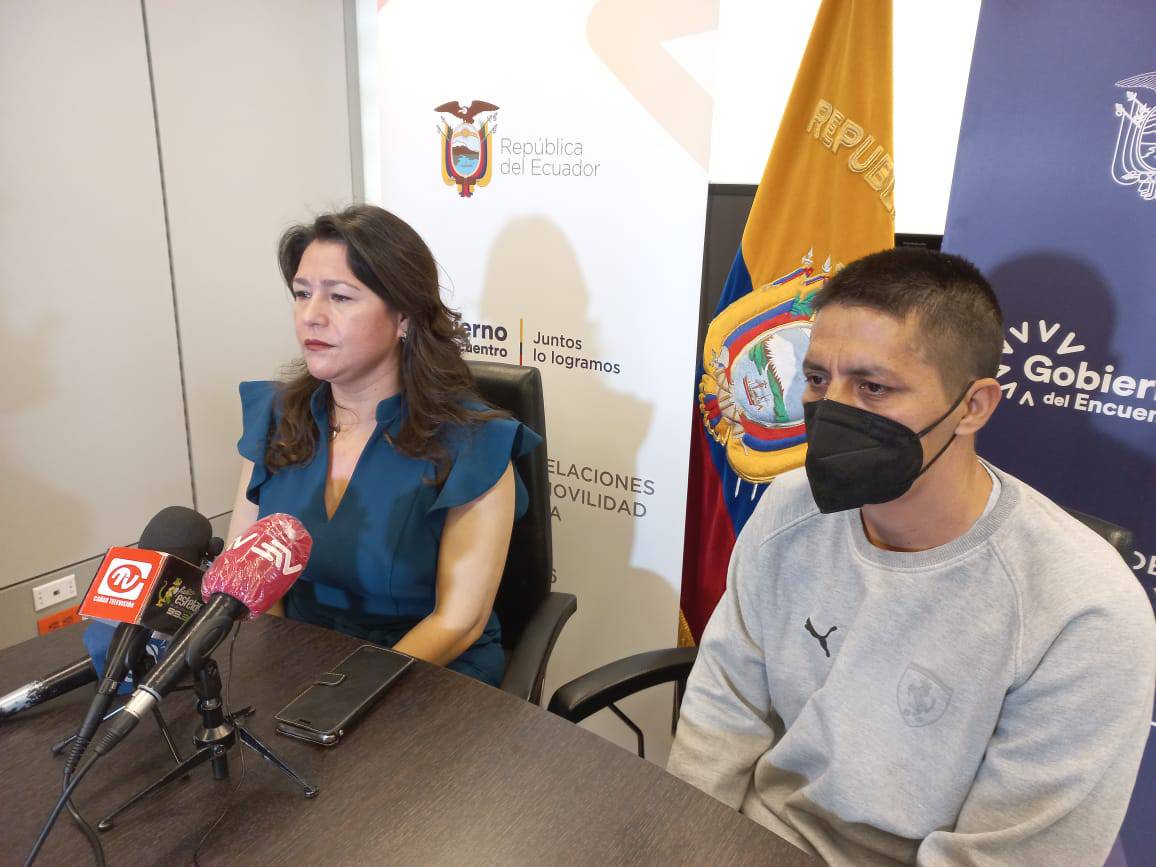In the first nine months of the year, 3,500 Ecuadorians have been deported from the United States.
Miguel saw death head-on on his way to the United States. The azuayan returned to Ecuador from Mexico two weeks ago after a grueling trip thru the desert was too much for him physically. Today he is back, with a $17,000 debt. And although he does not know where he will get that money, he has no intention of trying to cross into the US again. He offered his testimony to warn others against trying to illegally enter North America.
On May 15th, Miguel left Paute for Guayaquil and from there he traveled by plane to Cancun. He arrived directly in the Aztec country, which at that time did not require a visa for Ecuadorians to enter its territory.
In previous negotiations, a coyote offered to help Miguel make the one-day trip across the border and into the US. In the end he walked four days; for him it seemed like a thousand due to the extreme daytime heat and nighttime cold. He also suffered constant dehydration, blisters on his feet, hallucinations and despair that led him to want to kill himself. What ultimately saved him was a message on his cell phone, the last one before the battery ran out.
Although he is in debt and without a stable job, Miguel dared to give his testimony because he said that even though he has had a second chance at life, he doesn’t know what the future holds for him now. And he wants to warn others so that they don’t have to go thru what happened to him.
In Mexico, the coyotes took him to Agua Prieta, a city in the state of Sonora that borders the United States. The plan he paid the coyote for while he was still in Ecuador involved jumping over the wall and walk one day thru the desert.
But it turns out that this would be the longest “day” of his life, lasting not 24 hours, but 96. He had a little strength to move forward, and when there was no water, he asked the coyote how they would continue without it. He was told, “That doesn’t matter to me, if you die, it’s not my problem.”
In those moments, when everything was hopeless, he confessed that during horrifying hallucinations, he even thought about committing suicide. But drawing strength from weakness, Miguel and two companions made it to a road and at 06:00 he took his cell phone out and called 911 in Mexico. He received no response. At that point, he sent a message to his brother asking for forgiveness because, “he did not meet the objective and that he loved them very much,” then he turned it off to save battery.
He turned the device back on at 4:00 p.m. and received a call from the Chancellery office in Azogues. Puzzled, he didn’t know how they found out that he was “thrown in the desert,” then they explained that his family provided them with the information about his case.
The Internet signal was poor, but he managed to send his location by WhatsApp and when he heard “we already have it,” he was overjoyed. He was immediately located by border patrol who he told what had happened. They transferred him to a checkpoint, and from there he was returned to Mexico. He Mexican authorities to be deported to Ecuador, but the uniformed officers told him to go back the way he came himself.
He owed money, he had to make a second try
As he was still in Mexico, Miguel decided to make a second attempt to reach the United States. He contacted the coyote again and was taken to Ciudad Juárez, where, after spending two months locked in a warehouse, he was taken to a train station. The plan this time was to travel underneath a train, between the rails and the train engine car; the coyotes said that they were not detected there. A group left before Miguel’s, but realizing that it was too risky, he gave up and decided to return to his native country. He contacted his family again in Azuay, and they raised some money to buy him a plane ticket to return to Ecuador.
Now settled back in Paute, Miguel and his family are trying to raise the $17,000 to pay the loan that was borrowed from a local savings and credit cooperative and given to the coyotes for his trip.
After his three months of adventures, Miguel’s message is that these trips are dangerous, and it is not worth losing your life for money. He also wants to say how much he appreciates the work of the officials of Zone 6 of the Foreign Ministry, who did not leave him unprotected from the moment they contacted him in the middle of the desert.
In recent days, a national meeting on human mobility was held in Cuenca, with a focus on risky migration. When asked about the plans or projects to support deported or returned migrants, the Vice Minister of Mobility, Luis Vayas, couldn’t give a concrete answer.
“We are working right in the groups to establish those public policies. That is what it is about, having at our disposal products that we can present. We are going to work between today and tomorrow to make a proposal,” he said.
Not surprisingly, Íngrid Ordóñez, Zone 6 coordinator 6 of the Ministry of Foreign Affairs and Human Mobility, said that so far this year there have been 35 requests for the repatriation of bodies; 20 have been resolved and 15 they are still missing.
In these first nine months of 2021, roughly 3,500 Ecuadorians have been deported from the United States.


0 Comments